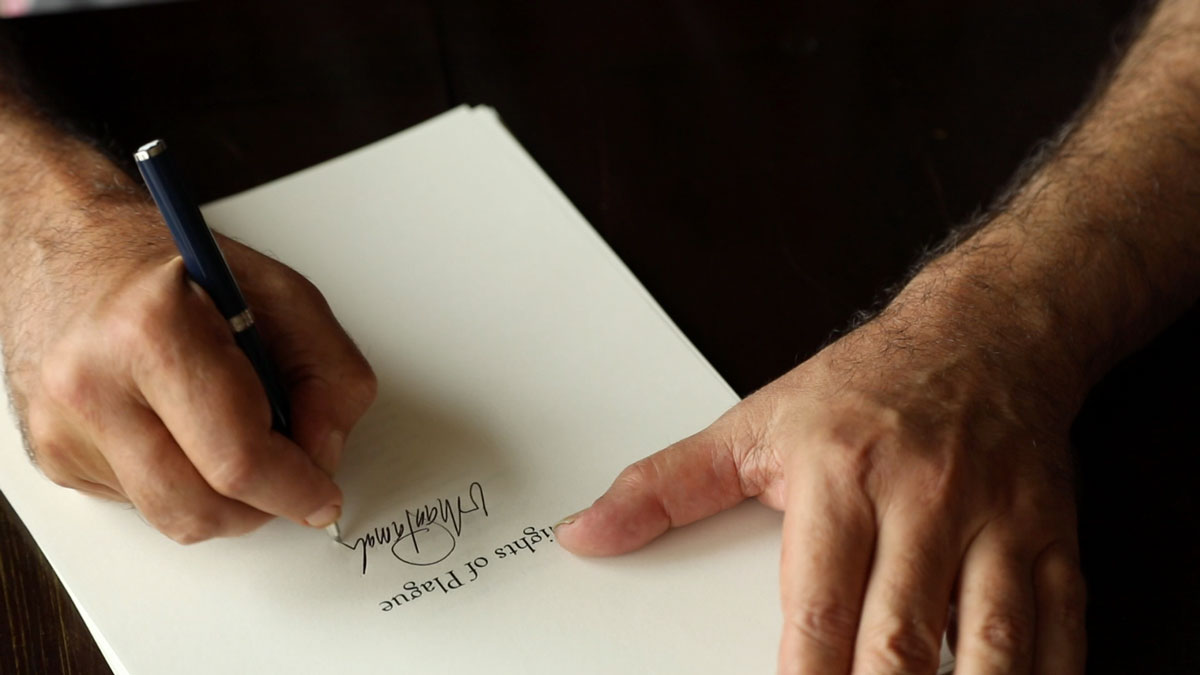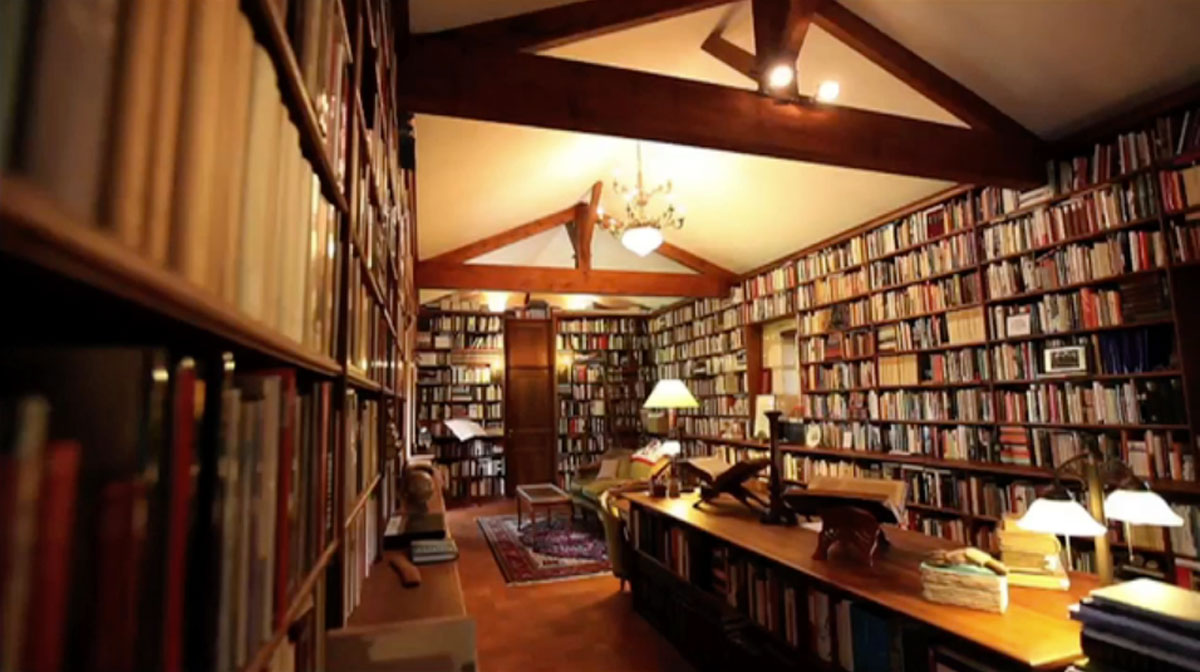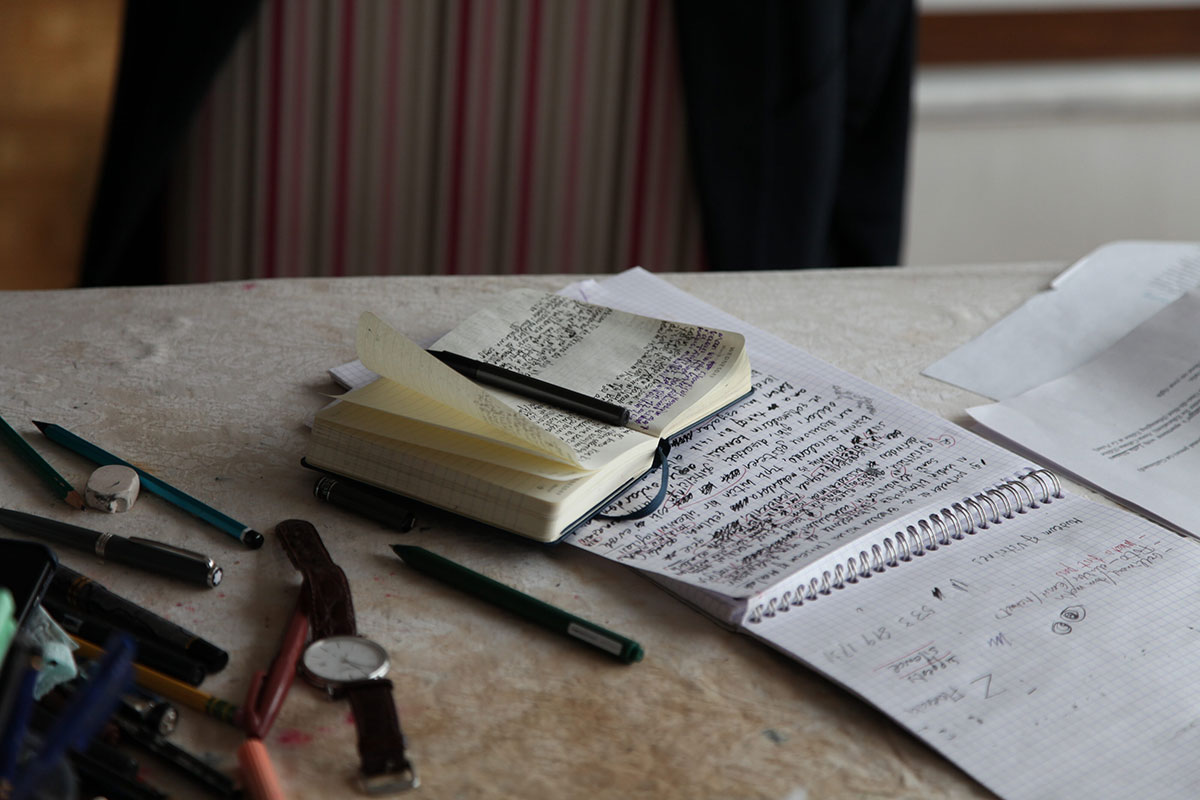PREVIEW: Ali Kazma-A House of Ink
 Ali Kazma works with lens-based media. All aver the world, he investigates situations, places and structures relating to man’s ability to transform the world. His works raise fundamental questions about human activity in economic, industrial, scientific, medical, social, and artistic spheres. Each video outlines a different facet of his on-going study of the ways in which our contemporary world changes, constituting an immense archive on the human condition.
Ali Kazma works with lens-based media. All aver the world, he investigates situations, places and structures relating to man’s ability to transform the world. His works raise fundamental questions about human activity in economic, industrial, scientific, medical, social, and artistic spheres. Each video outlines a different facet of his on-going study of the ways in which our contemporary world changes, constituting an immense archive on the human condition.
By Dimitris Lempesis
Photo: Francesca Minini Gallery Archive
In 1967 Guy Debord published his masterpiece The Society of the Spectacle, a visionary text in which he argued that Western societies were moving beyond the first phase of capitalism and heading toward a later condition. The spectacle is capital to such a degree of accumulation so as to become an image. The French philosopher posited that the individuals of these societies would become mere passive spectators of a stream of images chosen by the ruling economy, which would justify and protect the established institutional structure. A stream so incessant and pervasive that it would completely replace reality: only that which the spectacle wishes to reveal is true. The autonomy of the image is at the root of the dictatorship of appearance, of the fundamental tautology of the spectacle, in which importance is all presupposed and defined by the staging of importance. Sensible reality is no longer perceptible for what it contains, but has no other content than being visible. Since 2002, Ali Kazma has been on a journey to investigate the processes of production and its actors, bringing to the stage of the spectacle the practices, procedures and gestures designed to remain unobserved, since they are performed behind the scenes, far from the centers of capital and from the eyes of the audience. The methodology he employs is characterized by an obsession for the ways in which human beings modify themselves and their environment, for how they build it, change it and are themselves changed by it, without ever allowing this obsession to turn into judgment or criticism. Indeed, the strength of Ali Kazma’s work resides in his refusal to looking for a simplistic solution to what may be commercialization, salaried work, inequality, cruelty, alienation, or to the gradual death of craftsmanship. It is the choice to not embrace overly quick conclusions or banal and propagandistic messages that allows his films to give back to the world the complexity that has been removed from it. His work is capable of leading us over to the other side, of revealing the backstage of the spectacle, allowing us to access places that are usually inaccessible, to attend events and meet people whom we would not have otherwise met. Over the years, he has filmed in textile and automobile factories, in prisons and surgery rooms, as well as in tattoo studios, taxidermy labs, racetracks, airports and watchmakers’ workshops. At an early stage of his career, Kazma focused on the condition of Homo faber, but later developed a fascination for Homo narrans and the processes of artistic and cultural production. The works presented on the occasion of his solo exhibition, “A House of Ink” and “Sentimental”, were both shot inside Nobel Prize winner Orhan Pamuk’s flat, located on the banks of the Bosphorus, and reveal the author’s slow and hidden work. Kazma’s desire to manifest and explore the immateriality of books began with “Recto Verso” a book project published by Céline Fribourg (Take5 Editions), for which he collaborated with Alberto Manguel, a figure who has dedicated his entire existence to writing and reading. In 2015, Ali Kazma decided to film the extraordinary library/house/studio of this writer to make a two-channel video work entitled “House of Letters”. It was on this occasion that he first encountered and explored the space where the intangible activity of writing and thinking takes place. He observed that one finds an artist’s signature in traces that display no intention at all: the notes, underlinings and connections, the organization of his library, and the topography around an author are clues that can tell so much about what is behind a book.
When Ali Kazma visited Orhan Pamuk’s residence for the first time, he knew immediately that this space, attesting to over forty years of creative activity, was full of potential for further exploration into a writer’s work. In fact, in “A House of Ink”, he does not just film the writer working on his desk, or what he does and how he interfaces with his assistants: in much of the footage the subjects are the manuscripts, paintings, watercolors, collected objects and everything else that gravitates around Pamuk, rather than the author himself. To somewhat reveal the evanescent activity of a writer it is necessary to rearrange the evidence he leaves behind in a universe in which he lives a life as a writer, the infinitesimal traces permit the comprehension of a deeper, otherwise inaccessible reality. “A House of Ink”, in the gallery’s main room, appears as a large, cohesive triptych. Each projection flows at its own pace and has a different duration (47, 48 and 46 minutes respectively), which continuously generates a new and unique combination of sound and images. The asynchrony of this threefold configuration is an essential quality of the work and brings the viewer into the tortuous process of creation, inviting them to trace a pressing series of new connections. Magazines, annotations, photographs, illustrations, as well as moments of vulnerability, obsessions and habits are presented as methodically dispersed small pieces capable of catapulting the viewer into the functioning of the mind of a writer at work. For this work, Ali Kazma filmed for sixty-five days in the writer’s house, accumulating hundreds of hours of footage. In the second room of the gallery, two screens broadcast “Sentimental”, in which the artist captures Orhan Pamuk while he is signing a stack of papers in an automatic, repetitive movement. This gesture recalls one of the artist’s films from 2011, Clerk, and almost seems to close a circle: for the first time, Ali Kazma manifests himself in his work by including his presence through his voice in a dialogue with Pamuk that lasts for the entire duration of the work (7:45). Uncharacteristically for the artist, this work was unplanned: only after he had captured this spontaneous exchange during the shooting of A House of Ink, Kazma decided that he would make a new work precisely from this very conversation between himself and Pamuk. The artist believes that happy accidents and unexpected encounters can happen through commitment, long and patient work with one’s subjects. After all, the conversation the novelist had with him is also part of that labyrinthine layering of situations and moments that accompany the practice of writing. Through their words, the viewer learns that Pamuk will have to continue working at his desk for a long time, and that Ali, on the other hand, will leave the next day for a long journey. In the course of the work, the artist answers the writer’s questions about his upcoming itinerary. Alongside the footage of the dialogue itself, there are juxtaposed clips filmed later at the mentioned stops and sketches by Orhan Pamuk depicting almost exactly the same places, until a dizzying correspondence between present, past and future pervades the video in its entirety. In the work’s last minute, the writer opens up to the artist, confiding to him that staying indoors to write books is exactly the opposite of crossing the globe to create works of art, and that perhaps he would also have liked to live his life travelling like him. The work takes a philosophical turn when Pamuk, referring to Friedrich Schiller’s book On Naïve and Sentimental Poetry, defines Ali as a Naïve artist capable of creating in a spontaneous and playful way, and, conversely, identifies himself as a Sentimental poet, prone to harsh self-criticism and anxiety during the creative process.
Photo: Ali Kazma, Sentimental, 2022, Diptych synchronized HD video with sound, 7 min 45 sec, © Ali Kazma, Courtesy the artist and Francesca Minini Gallery
Info: Francesca Minini Gallery, Via Massimiano 25, Milan, Italy, Duration: 24/9-4/11/2023, Days & Hours: Mon-Fri 11:00-19:00, www.francescaminini.it/


